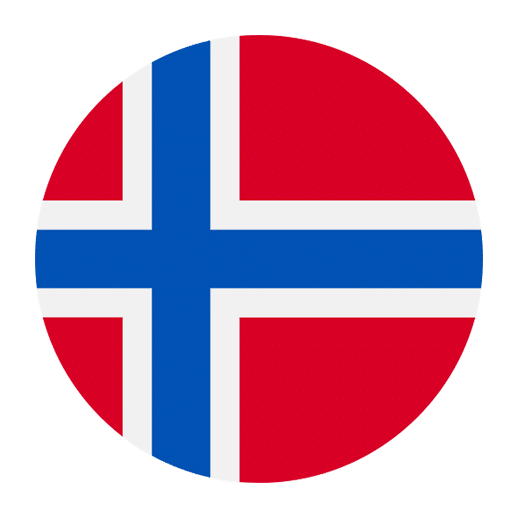When learning a new language, one of the most enjoyable and engaging topics to explore is food. Describing food flavors and textures not only enriches your vocabulary but also allows you to connect more deeply with the culture. Norwegian, a language spoken by over 5 million people in Norway, has a variety of terms that can help you articulate your culinary experiences more precisely. In this article, we will delve into the Norwegian words and phrases that describe food flavors and textures, equipping you with the linguistic tools to elevate your food-related conversations.
Basic Flavors
Understanding the basic flavors is essential for any food-related discussion. Here are the fundamental flavor descriptors in Norwegian:
1. **Sweet** – Søt
– Example: “Denne kaken er veldig søt.” (This cake is very sweet.)
2. **Sour** – Sur
– Example: “Sitronen er ganske sur.” (The lemon is quite sour.)
3. **Salty** – Salt
– Example: “Sjømaten er litt for salt for min smak.” (The seafood is a bit too salty for my taste.)
4. **Bitter** – Bitter
– Example: “Kaffen smaker litt bitter uten sukker.” (The coffee tastes a bit bitter without sugar.)
5. **Umami** – Umami (Interestingly, the term “umami” is also used in Norwegian)
– Example: “Denne suppen har en god umami-smak.” (This soup has a good umami flavor.)
Describing Complex Flavors
Food often has complex and layered flavors that go beyond the basics. Here are some Norwegian terms to describe more nuanced tastes:
1. **Savory** – Velsmakende
– Example: “Denne retten er veldig velsmakende.” (This dish is very savory.)
2. **Spicy** – Sterk
– Example: “Denne sausen er for sterk for meg.” (This sauce is too spicy for me.)
3. **Tangy** – Skarp
– Example: “Dressingen har en skarp smak.” (The dressing has a tangy flavor.)
4. **Earthy** – Jordaktig
– Example: “Soppen har en jordaktig smak.” (The mushroom has an earthy flavor.)
5. **Fruity** – Fruktig
– Example: “Denne vinen er veldig fruktig.” (This wine is very fruity.)
6. **Nutty** – Nøtteaktig
– Example: “Osten har en nøtteaktig smak.” (The cheese has a nutty flavor.)
Describing Textures
Texture is just as important as flavor when it comes to describing food. Here are some common Norwegian terms for different food textures:
1. **Crunchy** – Sprø
– Example: “Disse chipsene er veldig sprø.” (These chips are very crunchy.)
2. **Creamy** – Kremet
– Example: “Denne suppen er så kremet.” (This soup is so creamy.)
3. **Smooth** – Glatt
– Example: “Puddingen er utrolig glatt.” (The pudding is incredibly smooth.)
4. **Chewy** – Seig
– Example: “Karamellen er litt for seig.” (The caramel is a bit too chewy.)
5. **Tender** – Mør
– Example: “Kjøttet er veldig mør.” (The meat is very tender.)
6. **Juicy** – Saftig
– Example: “Frukten er så saftig.” (The fruit is so juicy.)
7. **Crispy** – Sprø (Yes, “sprø” can mean both crunchy and crispy)
– Example: “Skorpen på brødet er sprø.” (The crust on the bread is crispy.)
Describing Negative Textures
Not all textures are pleasant. Here are some Norwegian terms for less desirable textures:
1. **Dry** – Tørr
– Example: “Denne kaken er litt tørr.” (This cake is a bit dry.)
2. **Slimy** – Slimet
– Example: “Sjømaten var litt slimet.” (The seafood was a bit slimy.)
3. **Grainy** – Kornete
– Example: “Sauses er litt kornete.” (The sauce is a bit grainy.)
4. **Watery** – Vannete
– Example: “Suppen er for vannete.” (The soup is too watery.)
Combining Flavors and Textures
Combining flavor and texture descriptors can give a fuller picture of the food you are describing. Here are some examples:
1. “Denne kaken er veldig søt og kremet.”
– Translation: “This cake is very sweet and creamy.”
2. “Kjøttet er mør og har en jordaktig smak.”
– Translation: “The meat is tender and has an earthy flavor.”
3. “Disse grønnsakene er sprø og litt bitre.”
– Translation: “These vegetables are crunchy and a bit bitter.”
4. “Denne sausen er glatt og velsmakende.”
– Translation: “This sauce is smooth and savory.”
Practical Applications
To effectively use these descriptors, practice is key. Here are some exercises to help you integrate these terms into your vocabulary:
1. **Food Journal**: Keep a food journal where you describe the flavor and texture of everything you eat. Try to use as many Norwegian descriptors as possible.
2. **Restaurant Reviews**: Write reviews for restaurants you visit, focusing on the flavor and texture of the dishes. Share these reviews with a language partner or a Norwegian-speaking friend for feedback.
3. **Cooking Shows**: Watch Norwegian cooking shows or YouTube channels and listen for the flavor and texture descriptors used. Try to mimic the way the hosts describe the food.
4. **Flashcards**: Create flashcards with the Norwegian term on one side and the English translation on the other. Regularly test yourself to reinforce your memory.
Conclusion
Describing food flavors and textures in Norwegian can be a delightful way to expand your vocabulary and improve your language skills. Whether you’re a foodie looking to express your culinary experiences more vividly or a language learner aiming to immerse yourself in Norwegian culture, mastering these descriptors will undoubtedly enhance your fluency. So, the next time you enjoy a delicious meal, take a moment to describe it in Norwegian, and savor the richness of both the food and the language.

